Why Are Traffic Deaths Increasing While People Are Driving Less?

The latest data from the National Highway Traffic Safety Administration (NHTSA) is confirming what local agencies have already been suggesting. Last year represented another sizable increase in U.S. roadway fatalities, pitching up by 10.5 percent over the elevated death rate witnessed in 2020. The agency has estimated that 42,915 people were killed in 2021, whereas 2020 resulted in 38,824 fatalities — a 7.1-percent increase over the declines seen in 2019. While the current situation is not nearly as bad as the rates witnessed during the 1970s, this still represents the highest per capita fatalities in sixteen years and everyone is trying to get a handle on why.
Traffic deaths have been on the rise since the start of the pandemic, confusing everyone who counts crashes because the supporting data also shows that there was a lot less driving being done during the period. Historically, years where people are disinclined from hitting the road due to a beleaguered economy tend to represent far fewer traffic-related fatalities. We can see this happening in 1942 when the U.S. braced itself to enter World War II by rationing everything from fuel to rubber. Another glaring example takes place in 1932, as the nation reached the darkest point in the Great Depression. In fact, there are very few examples of per capita improvements in on-road deaths from the pre-war period, and those that do exist coincide directly with economic recession.
The examples become a little less glaring after 1942. But those with enough time on their hands will undoubtedly notice that traffic accidents tend to decline whenever the United States goes through a period of financial hardship. Correlation is not causation. But you can compare every recession that’s on the books against government driving data dating back to 1900 to draw your own conclusions. Though mine would still be that there are simply fewer opportunities for mayhem when the average person is suddenly spending less time behind the wheel.
This places the supposition at odds with our present reality, however. If roadway accidents really do decline whenever Americans have to tighten their belts and keep their vehicles parked at home, why have the last two years shown such a sizable increase in deaths?
The Governors Highway Safety Association (GHSA) has suggested that a combination of increases in speeding, distracted driving, driving under the influence, and “roads designed for speed instead of safety” has sent the United States down the wrong path — allegedly undoing decades of progress. Though the group may not be the one offering solutions everyone likes, as it has been pushing algorithmic software that uses enhanced traffic and in-car cameras to constantly track the behavior and location of individual drivers. Based on initiatives already planned in the European Union, the system also monitors vehicle status and would “ideally” offer the ability to send a live feed of a car’s interior to local law enforcement whenever the algorithm is tripped by a series of undesirable actions. Police would then be able to remotely disable the automobile and have their way with the occupants.
Love or hate the GHSA’s long-term vision, there’s certainly a case to be made regarding distracted driving. Despite everyone thinking cell phones would result in annual spikes in traffic accidents, the fatality rate remained relatively stable as they were ushered into the mainstream. But automakers may have opened Pandora’s box by introducing large touchscreens at the expense of easier-to-use knobs, buttons, and switches. Drivers are now required to interact with visual displays and are difficult to operate using muscle memory alone.
Drug and alcohol use is also unquestionably on the rise since 2010 and the Centers for Disease Control and Prevention (CDC) has reported borderline horrifying increases in the frequency of fatal overdoses since the pandemic began. Early data from the CDC has suggested that nearly 108,000 Americans died from drug overdoses in 2021 alone. With that total in mind, it’s easy to assume that a larger number of people climbed behind the wheel while inebriated than in years past.
Speeding is the one factor that’s a little harder to pin down. While there were numerous reports that speeding got out of hand at the start of 2020, attributed to empty roads created by the pandemic, hard data was limited to local law enforcement. This created a patchwork of limited information with the assumption that it had become a nationwide problem. But subsequent reporting has suggested it was a temporary issue. That’s not to suggest that speed wouldn’t play a factor in the death toll, just that the resulting data has been less consistent and harder to prove has become a problem for the whole country. Speeding undoubtedly went up in the spring and summer of 2020, we just don’t know if it continued into 2021.
Regardless of the cause, U.S. Transportation Secretary Pete Buttigieg said America faces a crisis on its roads that must be addressed. The Department of Transportation is focusing on an alleged decline in seatbelt use, the aforementioned speeding claims, and the assumption that more people went on out-of-state road trips as the pandemic waned. While possible, the latter issue doesn’t make much sense if you take into account that 2020 also represented as sizable an increase in traffic fatalities. Either way, the Biden administration has pledged $5 billion to cities interested in using the funds to slow down cars under the Safe Streets & Roads for All program.
While technically an automotive safety initiative, the funds have been earmarked primarily for things like adding bike lanes, widening sidewalks, and attempting to convince car-owning commuters to switch to public transit. Having more walkable cities isn’t a terrible idea (unless it makes driving a nightmare) and may even improve pedestrian safety. But something tells me there’s more at play here than people lacking sufficient alternatives to the automobile in urban environments. The last two years showed marked increases in vehicular-related deaths and the fact that they coincide with a period where people were undoubtedly driving less could suggest there’s a very serious problem.
Have driving assistance packages dulled people’s skills to a point where they’re now worse drivers? Has the drug epidemic played a role? Did the influx of oversized touchscreens make it impossible for people to keep their eyes on the road? Is this the result of the United States’ population (and average driver) becoming older? Or has the average motorist really turned into a lead-footed maniac with little care for the wellbeing of others by the daily stress of being alive?
[Image: mikeledray/Shutterstock]

A staunch consumer advocate tracking industry trends and regulation. Before joining TTAC, Matt spent a decade working for marketing and research firms based in NYC. Clients included several of the world’s largest automakers, global tire brands, and aftermarket part suppliers. Dissatisfied with the corporate world and resentful of having to wear suits everyday, he pivoted to writing about cars. Since then, that man has become an ardent supporter of the right-to-repair movement, been interviewed on the auto industry by national radio broadcasts, driven more rental cars than anyone ever should, participated in amateur rallying events, and received the requisite minimum training as sanctioned by the SCCA. Handy with a wrench, Matt grew up surrounded by Detroit auto workers and managed to get a pizza delivery job before he was legally eligible. He later found himself driving box trucks through Manhattan, guaranteeing future sympathy for actual truckers. He continues to conduct research pertaining to the automotive sector as an independent contractor and has since moved back to his native Michigan, closer to where the cars are born. A contrarian, Matt claims to prefer understeer — stating that front and all-wheel drive vehicles cater best to his driving style.
More by Matt Posky
Latest Car Reviews
Read moreLatest Product Reviews
Read moreRecent Comments
- 28-Cars-Later Say it ain't so, so reboot #6* isn't going to change anything?[list=1][*]V4-6-8 and High "Tech" 4100.[/*][*]Front wheel drive sooooo modern.[/*][*]NOrthSTARt.[/*][*]Catera wooooo.[/*][*]ATS all the things.[/*][*]We're *are* your daddy's Tesla. [/*][/list=1]
- MaintenanceCosts Can I have the hybrid powertrains and packaging of the RAV4 Hybrid or Prime with the interior materials, design, and build quality of the Mazda?
- ToolGuy I have 2 podcasts to listen to before commenting, stop rushing my homework.
- ToolGuy Please allow me to listen to the podcast before commenting. (This is the way my mind works, please forgive me.)
- ToolGuy My ancient sedan (19 years lol) matches the turbo Mazda 0-60 (on paper) while delivering better highway fuel economy, so let's just say I don't see a compelling reason to 'upgrade' and by the way HOW HAVE ICE POWERTRAIN ENGINEERS BEEN SPENDING THEIR TIME never mind I think I know. 😉



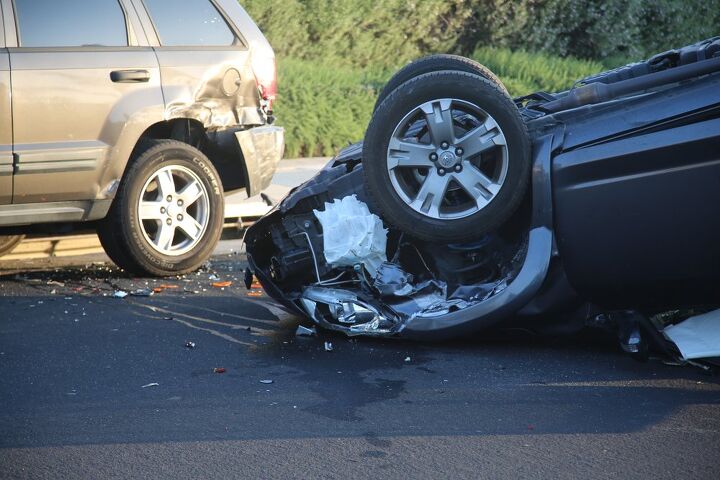

















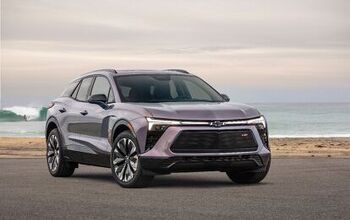
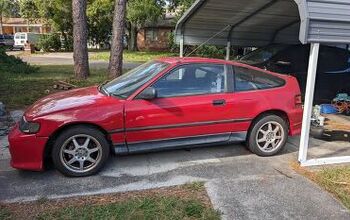

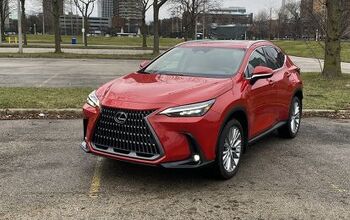
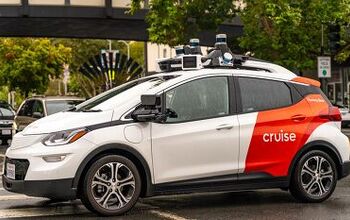








Comments
Join the conversation
Some observations from my recent drive from Nova Scotia to Florida and back in April... - Average speeds increase as you move southward, while average driving skill decreases in proportion. - Leaving an adequate following distance while travelling at 85 mph is an invitation for two cars to move into said space. - State troopers will not go after anyone for anything less than someone going 100mph+, and sometimes not even then. - Twice on the way home I witnessed a pair of Fast & Furious wannabees using all three lanes (and part of an off-ramp in one case) to zig-zag through traffic at well over 100mph. Three were Honda Civics, and the other was an SUV! How the SUV didn't cause a 20-car pileup I'll never know. One of the Hondas almost took out my rear bumper as he cut across the road from the passing lane to the slow lane (I was in the middle lane). - Many times, despite the 'no trucks in left lane' rule, we would be subjected to the rolling roadblock of one 18-wheeler passing another at a glacial pace. - Closest call of all was a small deer that managed to jump over the guardrail directly into the passing lane I was in. Brakes worked...although some drinks were spilled, the deer jumped away to safety. If there had been anyone behind me we would have been hit because I scrubbed off about 70mph as fast as physics allowed. Pure luck. Florida was nice, although I don't have key fob that works any more thanks to an accidental dunking at Cocoa Beach!
City and street design in the US makes the majority of roads extremely dangerous. Particularly when there is less traffic and driver speeds can go up. Lots of cross streets instead of roundabouts. Multi-lane high speed streets not separated from in and out ramps to strip malls. And the list goes on. Checkout the YouTube channel "not just bikes" for a lot of great info on this subject.